- Home
- P. T. Deutermann
The Commodore Page 17
The Commodore Read online
Page 17
They were close now. Sluff decided it was time to maneuver.
“All ahead flank, come left to”—he glanced down at the pelorus on the bridge wing—“three two zero.”
“Three two zero, all ahead flank, aye,” cried the helmsman and lee helmsman.
King jumped to it, squatting briefly before surging ahead and then left into a hard turn. Sluff watched the sea surface intently by the light of his guns’ muzzle blast, looking for the telltale signs of approaching torpedoes. His five-inch followed the third Betty as it made its escape. Sluff thought he saw a thin trail of smoke coming from its left engine, but then it disappeared into the darkness. A moment later all the guns went silent, leaving only the ringing silence of the air all around the ship, smashed into nothingness by all those guns, broken soon by the sounds of brass powder cases rolling around on the deck.
Sluff ordered the ship to slow down and told the OOD to take her back to the Wichita, which apparently had escaped any torpedoes launched in her direction. Or, the pilots had panicked, just dumped their fish, and turned away into the safety of darkness and opening range from the decidedly unfriendly welcome provided by J. B. King. Way out on the port quarter, Sluff could see a fire on the water, the remains of the first Betty still burning.
“Combat, Captain, two out of three ain’t bad. We’ll go back to Wichita, see what we can do for her. May have to rig a tow, although with no bow…”
“Combat, aye, and the scope is clear for the moment. No contact on the rest of the formation.”
“Tell the flag what happened and that we’re assisting Wichita.”
NINETEEN
Wichita managed to get steam up two hours after the night torpedo-bomber raid, but then had to back down all the way over to Tulagi, accompanied by Providence and two destroyers in case the Japs came back at sunrise. J. B. King and Evans went ahead to refuel and take on ammo and provisions. Once Wichita had been taken into the harbor, Providence, Malone, and Stayers joined the morning operation pit stop. At ten thirty the admiral summoned Sluff to the flagship for a meeting and lunch. As he was riding over to the cruiser he saw what looked like two Fletcher-class destroyers in the distance heading into the harbor from the southeast.
Providence’s exec led Sluff directly to the admiral’s cabin, where he found a small crowd assembling. The flag quarters consisted of an office/conference room, a bedroom, and a bathroom. The meeting was going to take place in the office area. The CO of Wichita was there, looking exhausted, along with his exec. Commander Reese, the admiral’s ops boss, his aide, and three other Cruiser Division Six staffers were standing around as if waiting for a ceremony of some kind to begin.
“Commodore, welcome,” the admiral said when Sluff entered. “Good work last night.”
“Amen,” said the CO of Wichita. “And I really mean that. I thought we were toast when those torpedo bombers came back.”
“We got lucky, Captain,” Sluff said.
The admiral asked everyone to sit down, and then said, “Not so fast, Commodore.”
Sluff blinked. The admiral and his aide came over. The aide handed a small cardboard box to the admiral, who instructed Sluff to remove his silver oak leaf collar devices. He then pinned on silver eagles, stood back, and offered a hand of hearty congratulations. “Admiral Halsey is extremely pleased with what DesDiv Two-Twelve has accomplished the last few times out,” he said. “He has spot-promoted you to Captain, and ordered you to take command of DesRon Twenty-One, which will consist of the ships of DesDiv Two-Twelve two plus two more Fletcher-class destroyers, Barrett and Cannon, who are arriving right about now. As a squadron commander you will have a staff, which is currently embarked in Barrett. That’s the good news.”
Sluff was thunderstruck. Then that “good news” comment penetrated.
“You will be relieved of command of J. B. King by Commander Tom Reese,” the admiral continued. “Most recently my excellent operations officer. I want the change of command to be executed by eighteen hundred today. You will then break your burgee in Barrett and have your squadron ready to sail by twenty-three hundred tonight. We will have business to attend to—the Japs are sending down another resupply run. Lunch, anyone?”
By the time Sluff got back to J. B. King his brain had finally settled down. Lunch had been necessarily a quick affair, as he had a destroyer squadron to organize, including two new ships to meet, not to mention a change of command. As he climbed the pipe ladder to King’s quarterdeck, he smiled at the exec’s startled expression when he saw those silver eagles.
“Things have changed,” Sluff announced.
At one thirty the next morning the task group was steaming east at a sedate twelve knots on the familiar east-west line drawn across the approaches to Guadalcanal. Savo Island was ten miles astern, a bright green blob on the radarscopes but otherwise invisible in the near-total, hot, and desperately humid darkness. The only advantage they had over the Marines back on the island was that there were no mosquitoes. Providence steamed alone on a separate east-west line, three miles south of the destroyers.
Commander Destroyer Squadron 21, Captain Harmon “Sluff” Wolf, occupied the port-side captain’s chair in the pilothouse of USS Barrett, sweating in full battle gear along with everyone else, and marveling at all that had happened the previous day. Commander Reese had come aboard an hour after Sluff returned to King, where he was taken in tow by the exec and given a tour of his new ship. A change of command aboard a destroyer normally took at least a week, with inspections, departmental briefings, change-of-matériel-custody meetings, a day or two at sea while the officers and crew demonstrated their professional abilities, and then, finally, a personnel inspection and the change-of-command ceremony itself. With an 1800 deadline, all of this had been condensed into a two-hour meeting in the wardroom, during which King’s department heads briefed the new CO on the matériel and personnel status of their departments.
Sluff then took him on a tour of the ship from stem to stern, before departing to embark in USS Barrett, another new-construction Fletcher-class destroyer and now his flagship. There he met with his new staff of four officers and six enlisted men and found out what had happened to open this particular unit commander billet. The previous commodore had suffered a heart attack on his first night ashore in Nouméa, having just completed the long transit from Pearl to the islands of New Caledonia. Halsey had broken up the headless six-ship squadron, assigning two to Sluff’s collection of four destroyers for a total of six, and the rest to one of the carrier groups. Sluff had assumed command of the squadron number of 21, and thus now had King, Evans, Malone, Stayers, Cannon, and Barrett under his command.
With Wichita out of action, Providence had become the sole heavy left in the Guadalcanal striking force. The admiral had said at lunch that there were two more cruisers coming but he did not know when. Before Sluff had left the flagship, the admiral called him in for a quick one-on-one conference. The coast watchers had reported six Jap destroyers headed south into the Slot. He’d told Sluff that they’d go out after dark that night to block what he thought was a resupply mission to bring supplies and reinforcements to the Jap garrison on Guadalcanal.
“I want you to conduct a torpedo ambush and then shoot the bastards up,” he’d said. “Providence will join the fun once we see torpedoes exploding north of us.”
Sluff hesitated. “Yes, sir, but we’ll execute a high-speed maneuver right after the torpedoes start hitting. Then we’ll start shooting, just like last time. But if Providence opens up, she’ll become the target for however many Jap cans are still able to shoot torpedoes, while we’re still dark.”
“What, you’re suggesting we’re just gonna watch?”
“No, sir, but let us start it with torpedoes, then do our Comanche circle around them, shooting, going dark, shooting some more, take their focus north as we run around the clock, and then Providence joins in.”
“Providence, in support of the destroyers.”
“Well, Admiral,
if there were more cruisers…”
“Bite your tongue, Commodore.” He paused. “I’ll think about it.”
“Thank you, sir.”
He’d gone back to King for the abbreviated change-of-command ceremony, conducted in the wardroom, and then had Mose pack up his uniforms and other personal gear for transfer to Barrett. The CO of Barrett, Commander Kelly Angstrom, had already moved up to his sea cabin when the previous commodore had first embarked, so Sluff’s move aboard didn’t cause any further perturbations.
Before finally departing King, Sluff had sat down with his exec, Bob Frey, and King’s new skipper, Commander Reese, to explain how they’d been operating, with Bob in CIC sometimes taking over the actual operational control of the division under Sluff’s orders from the bridge.
“It’s all about the radar,” Sluff had said. “The people in CIC have the complete picture. The captain on the bridge does not. You’ll have to decide where you want to be when the shooting starts. Nothing beats the captain being on the bridge when another ship screws up and tries to cut you in two, but for the engagement, the radars and the DRT can show you everything. Bob and his CIC team know how to do that.”
“When we went to GQ in Providence, the ship’s exec was always back aft at secondary conn in case the bridge got hit,” Reese pointed out. “That arrangement saved San Francisco, you’ll remember.”
“Not quite,” Sluff countered. “Their secondary conn had been wiped out when that Betty hit the after director tower the day before, remember? Anyway, you’re correct; that is DESPAC doctrine, too. But think of this way, Tom: Bob is the second-most-experienced officer you have on board. In fact, in the matter of night fighting with the Japs, he has more experience than most of my squadron’s COs. Isn’t that the guy you want running the tactical picture in CIC? Second, destroyers are much smaller than cruisers. If the bridge does get wiped out, it’s likely that the entire ship is going to be wiped out, especially if we’re talking about Long Lance torpedoes. I believe the trade-off is worth it.”
Reese nodded. Sluff realized that he was perhaps stepping on some toes here.
“It’s your ship now, Tom,” he said. “You do it your way. I’m not ordering you to organize it any other way than by DESPAC doctrine.”
“Thanks, Commodore,” Reese said, looking relieved.
“Oh, and by the way,” Sluff said. “When it all quiets down and assuming you’re still afloat, you will be expected to glare at the bosun and ask for some ‘damned coffee.’”
And that had been that. Another officer now commanded his destroyer. He now commanded six destroyers. He’d met his staff and had sent his operations officer, Lieutenant Commander Hugh Garing, to King, so that Bob Frey could explain how they’d been doing business once the long, black steel fish went into the water and the shells began to fly. It was totally unconventional, but the advent of shipborne radar and the Japs’ lack of it, for now anyway, had changed everything.
At the moment it was LCDR Garing down in CIC. Sluff thought he’d probably be very nervous and wondering what the new squad dog wanted him to do in a gunfight. He resolved to be careful in giving orders to his “voice” down in Combat. Then he had a thought: Why couldn’t he be down in Combat? He was no longer double-hatted as both commodore of a division and captain of a ship. Barrett’s captain could take care of keeping Barrett from getting into collisions and other calamities, while he, the boss, could be down in CIC, if he wanted to, and with the complete tactical picture laid out on the DRT and the radarscope. Where he could see.
He glanced across the pilothouse, where Commander Langstrom, Barrett’s CO, was sitting, a red flashlight perched on his left shoulder illuminating a message board in his lap.
“Skipper?” Sluff said.
“Commodore?”
“I’ve decided that I want to be in Combat when the game starts,” Sluff said.
“Yes, sir,” Langstrom replied. Then the bitch-box lit up.
“Bridge, Combat, radar contact, three four zero, range fifteen miles, composition four to six, course one seven zero, speed three-five.”
Sluff reached for the 21MC in front of him but then stopped. Combat had called the bridge, not the commodore. Commander Langstrom was looking across the pilothouse. Sluff grinned at him, indicated that he should acknowledge, and then he went below.
TWENTY
New Georgia Island
“Commodore’s in Combat,” a voice called out as Sluff pushed into the crowded space. The center of attention was the dead-reckoning tracer, or DRT, the lighted plotting table where pencil-wielding plotters created spidery tracks on the tracing paper that indicated where both friendly and enemy ships were in relation to one another. Lieutenant Commander Garing sat on a stool at the head of the table. Barrett’s navigation officer sat at the other end, with two plotters on either side creating the tactical picture on the table. A radarman sat on a stool in front of the planned-position indicator scope, a dinner-plate-sized, round glass display that showed the actual contacts as bright green pips every time the rotating beam washed over them. The operator could position a cursor on a target, and the dials on the scope would read out that contact’s distance and true bearing. He would then mutter that data into a sound-powered phone to the plotters, who would mark that position on the paper and then draw a line between the newest position and the last one, thus creating the track. The room was under red-light conditions to enhance the radarscope’s presentation.
As Sluff joined the intent crowd at the DRT, Garing laid it out for him. “Five, maybe six, high-speed contacts, headed towards Cape Esperance, where the main Jap forces are. On our present course and speed, they will pass to the east of us at a range of about eight thousand yards.”
“What do we need to intercept within our torpedo range?”
Another of Sluff’s staff officers, Lieutenant Griggs, stepped in with a maneuvering board calculator in his hand. “We need to come right to one two zero, speed two-five, sir.”
“Order it. Immediate execute by turn movement to starboard.”
Garing blinked, as if to say, Me?
Sluff put his hand out. “TBS handset. Now.”
The lieutenant scrambled to pull a radio handset out from under the DRT and handed it over to Sluff, who issued the immediate-execute order to the squadron. Once it was done and Sluff felt Barrett heel to port and accelerate, he gave the handset to Garing.
“I need to pay attention to the plot,” he said. “Hugh, you will be my voice. You know how to issue maneuvering orders? CORPEN, TURN, immediate execute, execute to follow?”
“Uh, yes sir, I do. I just didn’t—”
“I understand. Now make sure everybody got the last signal. Check the tracks.”
Both Garing and Lieutenant Griggs jumped to examine the DRT tracks to make sure that none of their brood was continuing to sail off to the east at twelve knots while the rest of the squadron bore away to the southeast.
“Does Providence hold the contacts?”
“Yes, sir,” Barrett’s CIC officer reported.
“Okay, then here’s the plan. We close into launch position, each ship will then fire five torpedoes, high speed, two-degree spread, five-foot depth.” He saw Griggs writing furiously in his notebook. “Then we will turn together to three five zero, speed two-five, and run until torpedoes start going off, at which point we will turn together to zero five zero and open fire. Prepare the maneuvering signals and give me that handset. What’s our collective and what’s my call sign?”
“Sir, the squadron’s collective call sign is Smoke; your call sign is Bear.”
Sluff smiled at that. Should have been wolf, but the smoke part was right. Then he keyed the radio.
“Smoke, this is Bear. Prep torpedo attack on my signal. Five fish. High speed. Spread two. Depth five feet. Turn away after launch on my signal. Open fire with guns after hits observed. Break. Acknowledge.”
One after the other the squadron ships acknowledged receipt with the simp
le word “Wilco.”
“Time to launch point?”
“Four minutes, Commodore,” Griggs said. Sluff made a note to learn more about Lieutenant Griggs. The youngster was anticipating his questions. He scanned the plot. The Jap destroyers were in a loose column, speeding southeast through the darkness, headed for the cape and apparently oblivious to the approaching danger. His own squadron was sprinting south of east, headed for the optimum point from which to launch their torpedoes. Three minutes and counting.
“New radar contact!” shouted the PPI operator. “Bearing two five zero, range sixteen miles, three contacts, course zero three zero, speed three-five.”
Sluff turned around and looked down over the PPI operator’s shoulders. Three pips, in line-abreast formation, coming around the south end of New Georgia Island and headed right for them. Big pips, too. Cruisers?
“Notify Providence. Time to launch point?”
“Two minutes, thirty seconds.”
Sluff thought fast. Maybe these six destroyers had been bait to lure the diminished American striking force out into a cruiser ambush. Run their tin cans right down the Slot, just like the last two times. Then pincer the Americans with a three-pack of cruisers coming from outside Ironbottom Sound? He suppressed a shiver.
“Range to western contacts?”
“Thirteen miles and closing.”
“Okay, everybody, here’s the new plan: Proceed with the torpedo attack against the destroyer column, then turn due south and set up a torpedo attack against whatever’s coming in from the west. We can cap their T, I do believe. Signals ready, Hugh?”

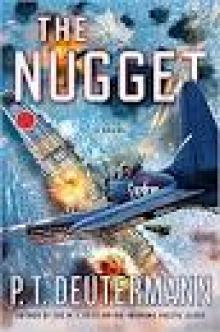 The Nugget
The Nugget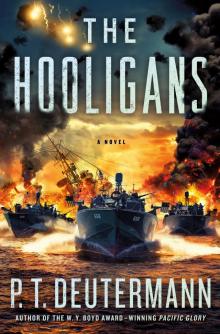 The Hooligans
The Hooligans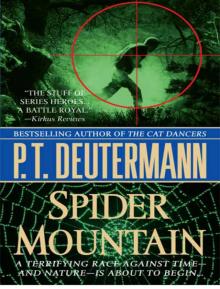 SPIDER MOUNTAIN
SPIDER MOUNTAIN![Cold Frame [retail] Read online](http://i1.bookreadfree.com/i/03/19/cold_frame_retail_preview.jpg) Cold Frame [retail]
Cold Frame [retail] Sweepers
Sweepers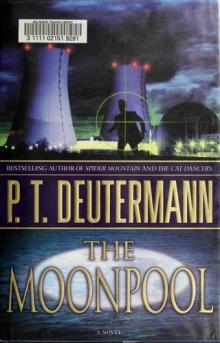 Cam - 03 - The Moonpool
Cam - 03 - The Moonpool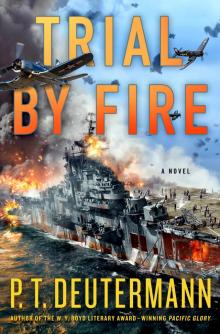 Trial by Fire
Trial by Fire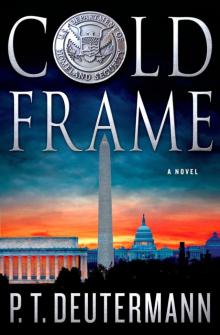 Cold Frame
Cold Frame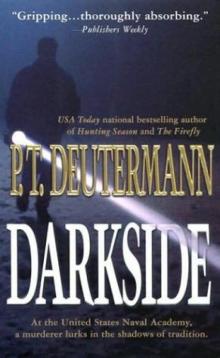 Darkside
Darkside Cam - 04 - Nightwalkers
Cam - 04 - Nightwalkers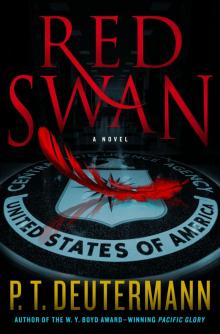 Red Swan
Red Swan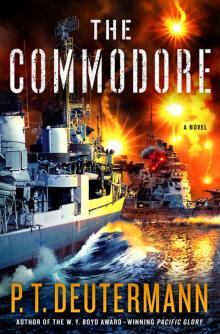 The Commodore
The Commodore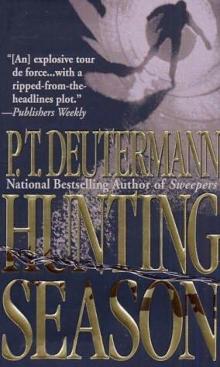 Hunting Season
Hunting Season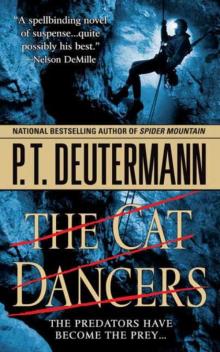 The Cat Dancers
The Cat Dancers Scorpion in the Sea
Scorpion in the Sea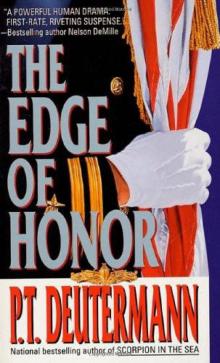 The Edge of Honor
The Edge of Honor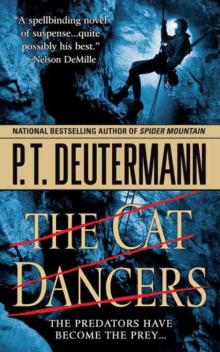 The Cat Dancers cr-1
The Cat Dancers cr-1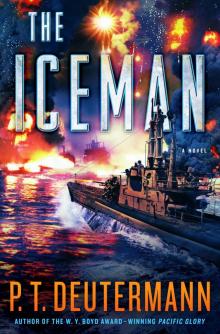 The Iceman
The Iceman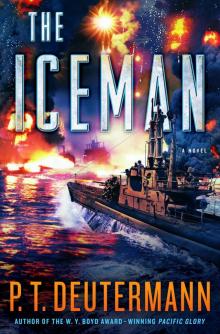 The Iceman_A Novel
The Iceman_A Novel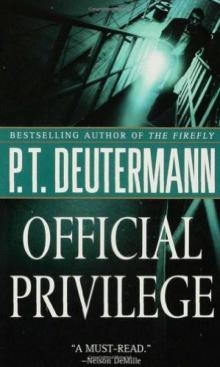 Official Privilege
Official Privilege Sentinels of Fire
Sentinels of Fire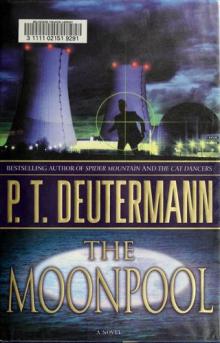 The Moonpool cr-3
The Moonpool cr-3 Nightwalkers cr-4
Nightwalkers cr-4 The Firefly
The Firefly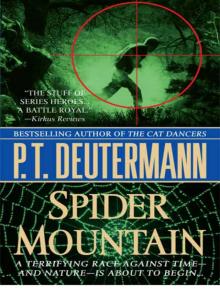 Spider mountain cr-2
Spider mountain cr-2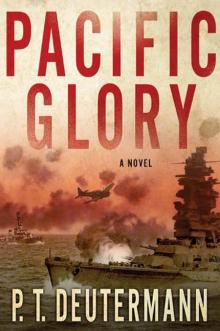 Pacific Glory
Pacific Glory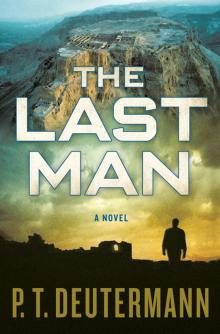 The Last Man
The Last Man